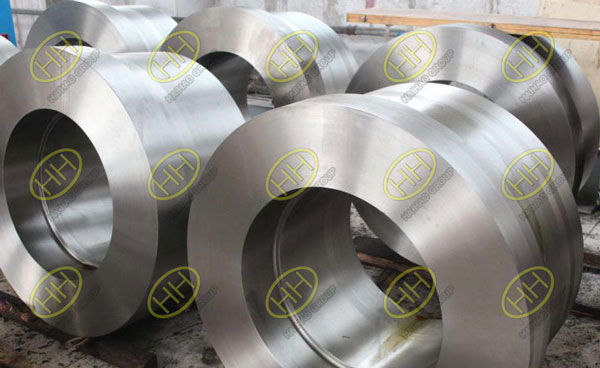Common causes of corrosion of stainless steel forgings
Chemical etching
Surface pollution: the oil, dust, acid, alkali, salt, etc. attached to the surface of the workpiece are transformed into corrosion medium under certain conditions, and react with some components in the stainless steel parts to produce chemical corrosion and rust.
Surface scratch: the damage of various scratches to the passivation film reduces the protection ability of stainless steel, and it is easy to react with chemical medium to produce chemical corrosion and rust.
Cleaning: the cleaning is not clean after pickling and passivation, resulting in residual liquid retention and direct corrosion of stainless steel parts (chemical corrosion).

Stainless steel forging fittings
Electrochemical corrosion
Carbon steel pollution: scratch caused by contact with carbon steel parts and galvanic corrosion caused by formation of primary battery with corrosive medium.
Cutting: the adhesion of rusty substances such as cutting slag and spatter and the formation of galvanic cell by corrosive medium lead to electrochemical corrosion.
Baking correction: the composition and metallographic structure of the flame heating area change unevenly, and the galvanic corrosion occurs when the galvanic cell is formed with the corrosive medium.
Welding: the physical defects (undercut, porosity, crack, incomplete fusion, incomplete penetration, etc.) and chemical defects (coarse grain, poor chromium at the grain boundary, segregation, etc.) in the welding area form the galvanic cell with the corrosive medium and produce electrochemical corrosion.
Material: the chemical defects (uneven composition, s, P impurities, etc.) and surface physical defects (loose, sand hole, crack, etc.) of stainless steel material are conducive to the formation of primary battery with corrosive medium and generate electrochemical corrosion.
Passivation: poor pickling passivation results in uneven or thin passivation film on stainless steel surface, which is easy to form electrochemical corrosion.
Cleaning: the remaining pickling passivation residue and the product of chemical corrosion of stainless steel form electrochemical corrosion with stainless steel parts.
Stress concentration is easy to cause stress corrosion.
In a word, stainless steel is difficult to be corroded due to its special metallographic structure and passivation film, but it can not be corroded under any condition. In the presence of corrosive medium and inducement (such as scratch, spatter, cutting slag, etc.), stainless steel can also be corroded by slow chemical and electrochemical reaction with corrosive medium, and the corrosion rate is quite fast under certain conditions, resulting in corrosion phenomenon, especially pitting corrosion and crevice corrosion. The corrosion mechanism of stainless steel parts is mainly electrochemical corrosion.
Therefore, in the process of processing stainless steel products, all effective measures should be taken to avoid corrosion conditions and inducements. In fact, many corrosion conditions and inducements (such as scratches, splashes, slag cutting, etc.) have significant adverse effects on the appearance quality of products, which should be and must be overcome.
As a professional supplier of pipe fitting, we have more than 30 years of experience in this industry. If you have any problem, please contact me.Email: sales@haihaogroup.com
